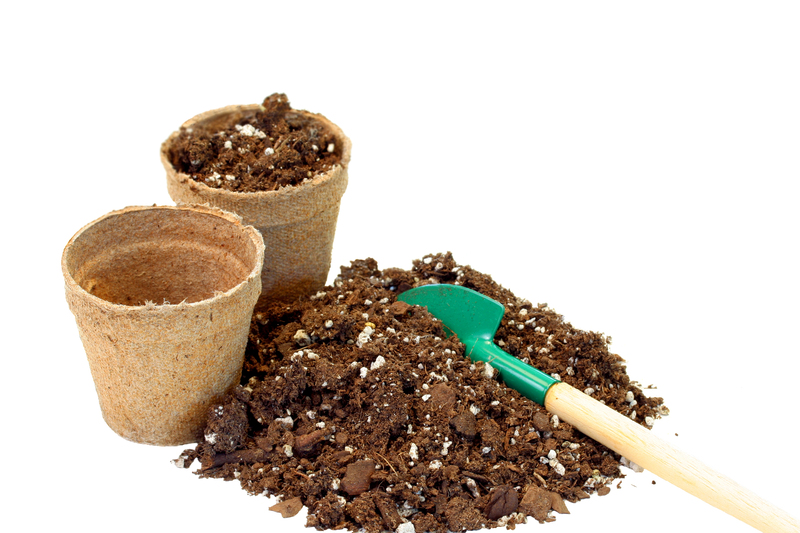Unusual Tropical Plants That Adapt Well to UK Weather
Are you dreaming of transforming your British garden into a lush oasis inspired by the tropics? While the UK’s temperate climate may not seem ideal for growing exotic flora, many tropical plants are surprisingly resilient and can thrive outdoors with the right care. In this comprehensive guide, we'll explore a selection of unusual exotic plants that not only survive but flourish in the UK's weather--bringing colour, drama, and a taste of the tropics to your outdoor space.

Why Grow Exotic Plants in the UK?
The British climate--characterised by cool winters, mild summers, and variable rainfall--can present challenges for plant enthusiasts. However, with slightly sheltered spots and some consideration for frost protection, a range of hardy tropical plants prove more adaptable than you might imagine. Introducing these species:
- Enhances garden diversity
- Adds striking architectural interest
- Provides unique textures and vibrant colours
- Attracts wildlife and beneficial insects
Below, you'll discover some of the most unusual tropical plants suited to UK gardens and learn essential tips for their successful cultivation.
Top Unusual Tropical Plants that Thrive in UK Climate
1. Trachycarpus Fortunei (Chusan Palm / Windmill Palm)
A favourite among UK gardening enthusiasts, the Trachycarpus Fortunei boasts a remarkable tolerance to cold, enduring temperatures as low as -15°C when mature. Its bold, fan-shaped leaves provide an instant touch of the tropics, delivering both shade and structure.
- Position: Full sun to partial shade
- Soil: Well-drained, fertile soil
- Watering: Keep moist but never waterlogged
- Winter care: Mulch base and wrap trunk in young plants during severe cold
2. Musa Basjoo (Hardy Banana Plant)
The Hardy Banana is among the most iconic tropical-looking plants for the UK. While it rarely fruits this far north, its huge, paddle-shaped leaves conjure exotic jungles right in your backyard.
- Position: Sheltered, sunny spots
- Soil: Moist, rich, and well-drained
- Winter care: Cut leaves back in autumn, mulch heavily around base to protect rhizomes
Tip: In milder regions, Musa Basjoo can reach heights over 3 metres with impressive annual growth.
3. Fatsia Japonica (Japanese Aralia)
An outstanding evergreen, Fatsia Japonica provides deeply lobed, glossy leaves reminiscent of tropical foliage. What's more, it's surprisingly hardy, tolerating frost and shade better than many other exotics.
- Position: Partial to full shade
- Soil: Any fertile, moist but well-drained soil
- Bonus: Attractive white flowers in autumn followed by black berries
4. Dicksonia Antarctica (Tasmanian Tree Fern)
If you want true tropical drama, the Tasmanian Tree Fern unfurls enormous fronds from a trunk-like base and adapts well to moist, sheltered garden spots across the UK.
- Position: Out of cold winds and direct sun
- Soil: Humus-rich, damp but well-drained
- Winter protection: Wrap the “crown” with straw or fleece during harsh frost
5. Tetrapanax Papyrifer (Chinese Rice Paper Plant)
With leaves up to 80cm across, Tetrapanax Papyrifer is a fast-growing, architectural exotic for bolder gardens. It copes with most British winters if planted against a sunny, protected wall.
- Position: Sheltered, south/west-facing
- Soil: Rich, well-drained
- Growth habit: Can reach up to 3m tall in a season
6. Cordyline Australis (Cabbage Palm)
Often mistaken for palms thanks to their long, strappy leaves, Cordylines are tough tropical lookalikes. Their distinctive silhouette adds instant height, and they're known for enduring the UK's cooler, wetter conditions.
- Position: Full sun to light shade
- Soil: Free-draining, tolerates poor soils
- Winter tip: Protect young plants from heavy frost; mature specimens are very hardy
7. Melianthus Major (Honey Bush)
This unusual South African perennial wows with serrated, silvery-blue foliage and exotic, nectar-rich red flowers. Its scent and striking appearance will earn your garden a second glance.
- Position: Sun or part shade, sheltered from wind
- Soil: Fertile, light and well-drained
- Maintenance: Cut back old stems in spring; mulch base for winter
8. Hedychium (Ginger Lilies)
Ginger Lilies offer showy, fragrant blooms in late summer and lush strappy leaves, creating a distinctively lush effect. While not fully hardy, many Hedychium species survive in warm, sheltered spots or with winter mulch.
- Position: Sheltered, sunny, or semi-shaded locations
- Soil: Well-draining, moisture-retentive
- Winter care: Mulch well or lift rhizomes to overwinter indoors
9. Phormium (New Zealand Flax)
Phormiums bring bold, spiky foliage in a rainbow of hues--red, bronze, yellow, green--and will tolerate wind, salt, and even the occasional frost. Their upright habit gives a strong, exotic focal point to borders or pots.
- Position: Sun or partial shade
- Soil: Almost any, so long as it's well-drained
- Care: Remove dead leaves to keep plant looking smart
10. Eucomis (Pineapple Lily)
Bring a taste of the tropics to your beds and patio pots with Pineapple Lilies. Their rosettes of fleshy leaves and quirky, pineapple-like flower spikes are real conversation starters.
- Position: Sunny, warm border or patio pots
- Soil: Well-drained and rich in organic matter
- Winter storage: Mulch bulbs outdoors, or lift and store indoors (in colder areas)
How to Grow Exotic-Looking Plants in the UK
Choosing the Perfect Spot
- Maximise shelter by planting near fences, walls, or evergreen shrubs.
- Avoid cold pockets and exposed, frost-prone areas.
- Use containers for mobility: pots can be moved to safety during winter chills.
Soil Preparation
- Improve drainage: Work in grit and compost to prevent root rot.
- Add mulch to conserve moisture and insulate root zones.
Watering and Feeding
- Water regularly during dry spells—most tropical plants for UK gardens prefer evenly moist (not soggy) roots.
- Feed with a balanced liquid fertiliser in summer for vigorous growth and blooms.
Winter Protection
- Mulch heavily with bark, straw, or compost in late autumn.
- Wrap trunks of young palms and bananas in horticultural fleece or bubble wrap.
- Cover crowns of ferns and gingers to protect new shoots from frost.
Designing a UK Tropical-Style Garden
Creating a successful tropical garden in the UK relies on three key design principles:
- Layering: Combine tall, bold architectural exotics (e.g., bananas, palms) with mid-level shrubs (e.g., Fatsia) and underplant with vibrant perennials (e.g., cannas, hostas).
- Texture: Contrasting glossy, spiky, or feathery foliage adds depth and visual intrigue.
- Colour: Select plants with vivid flowers, purple or bronze leaves, or variegated patterns for year-round tropical flair.
Add to the sense of escapism with bold garden furniture, water features, and even warm-toned decorative mulch (like slate or pebbles).
Frequently Asked Questions: Unusual Tropical Plants for UK Gardeners
Do I need a greenhouse to grow tropical plants in the UK?
Many of the hardy exotic plants on this list require no greenhouse; just good drainage, sheltered planting, and occasional winter protection.
Can tropical plants survive UK winters outdoors?
The toughest species, like Trachycarpus fortunei, Cordyline australis, and Fatsia japonica, will withstand most British winters. Less hardy varieties may need annual mulching or to be brought indoors during severe cold.
Are tropical plants high-maintenance?
Not necessarily! Many thrive with minimal attention. However, annual feeding, mulching, and winter wrapping will boost their chances of spectacular success.

Conclusion: Bring the Tropics Home
With careful selection and a touch of creative planning, it's entirely possible to transform even a small UK garden into an exotic retreat. Unusual tropical plants for UK weather not only survive, but add year-round interest, drama, and flair. Whether you choose towering bananas, striking palms, or bold-leaved perennials, each will contribute its own unique magic to your personal paradise.
Dare to experiment with these exotic garden plants--the British climate may surprise you, and your garden will become a talking point for visitors and neighbours alike!
Further Reading & Resources
- RHS: Exotic and jungle look plants
- Gardeners' World: Best hardy tropical plants for UK gardens
- Exotic Garden UK
If you have your own experiences growing tropical-looking plants in the UK, or want advice on specific varieties, feel free to leave a comment below--let's keep British gardens bold, beautiful, and boldly exotic!